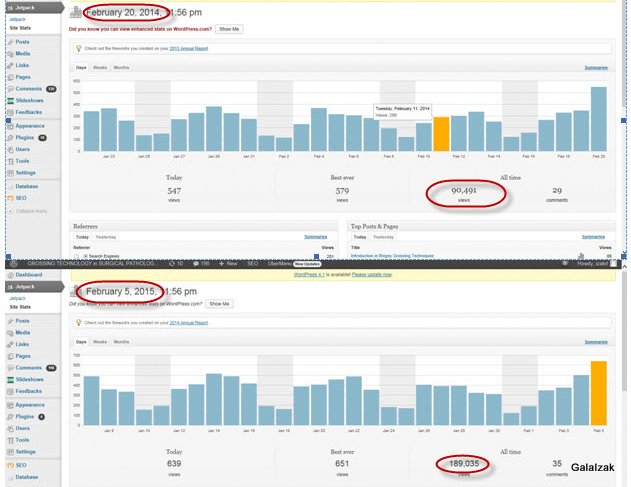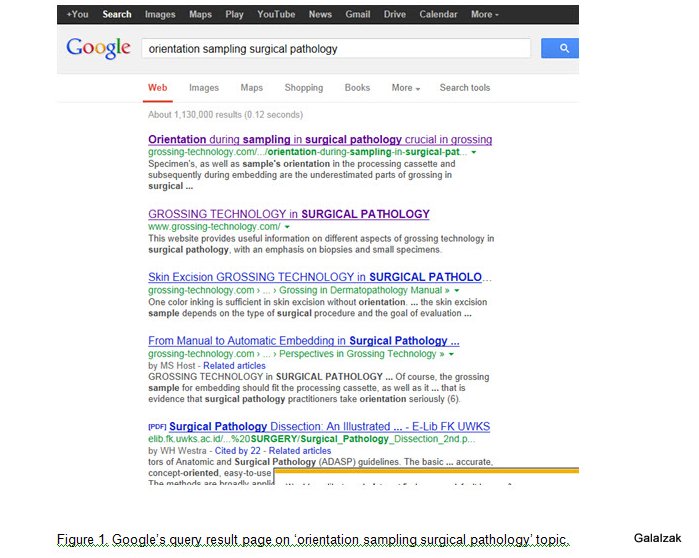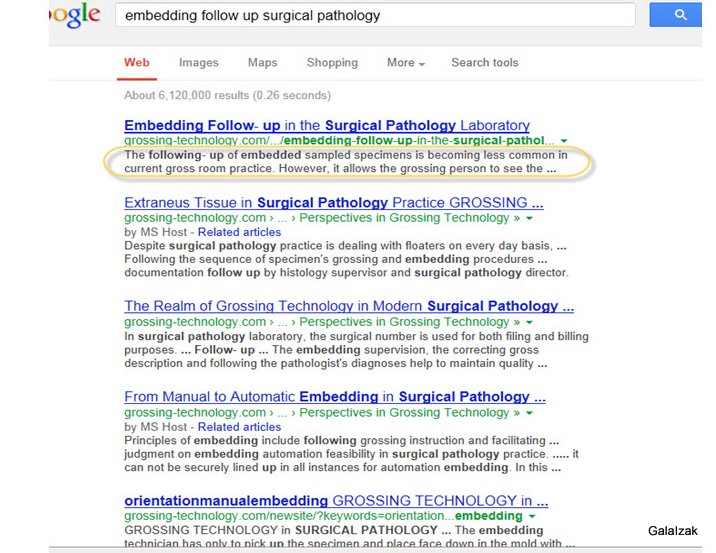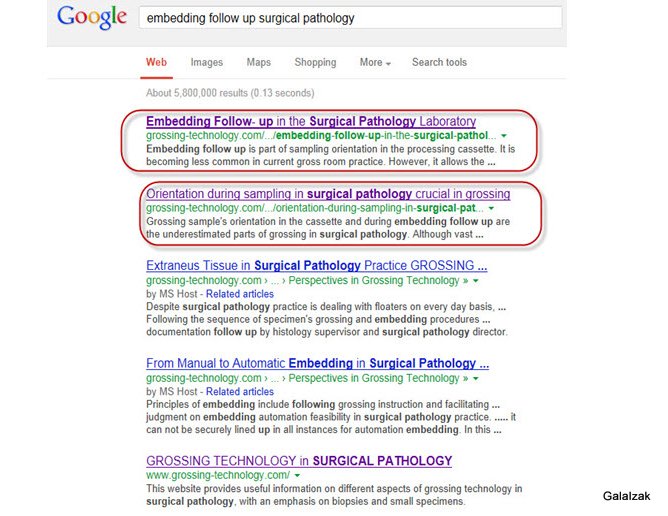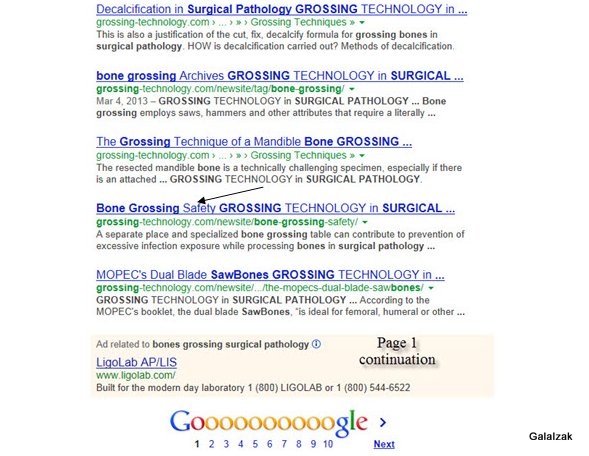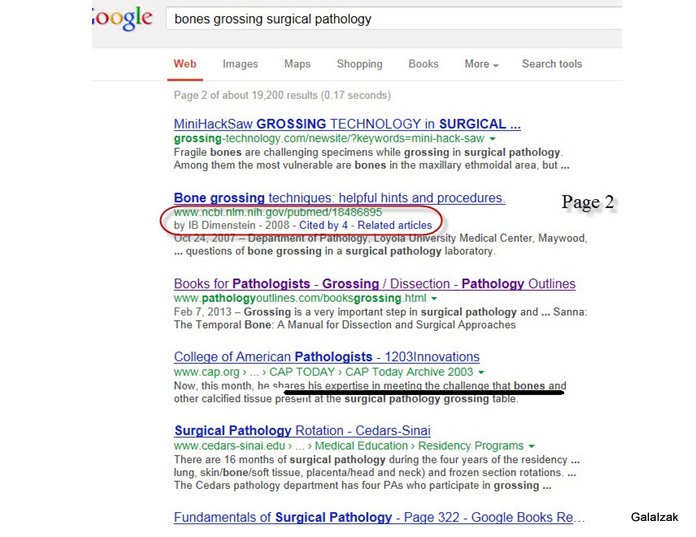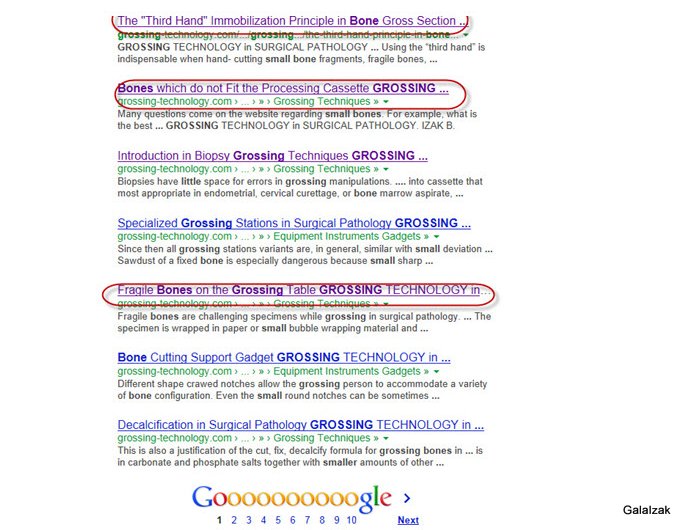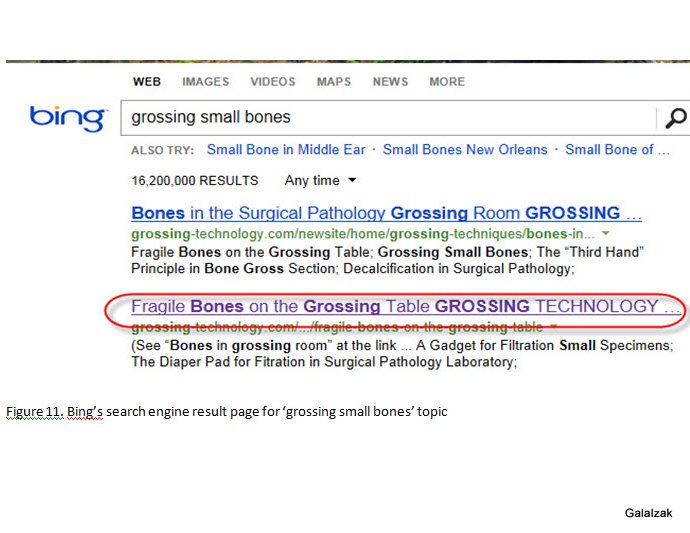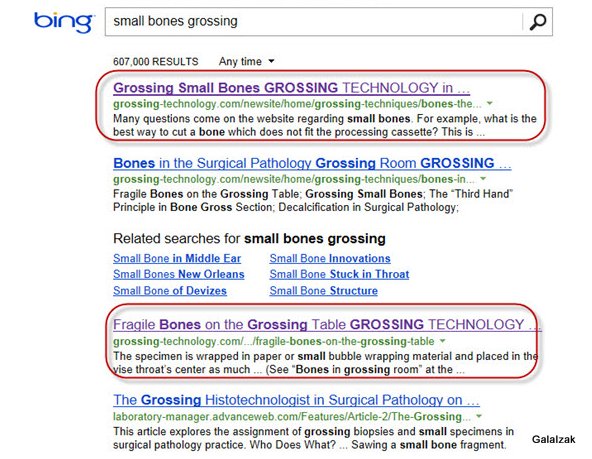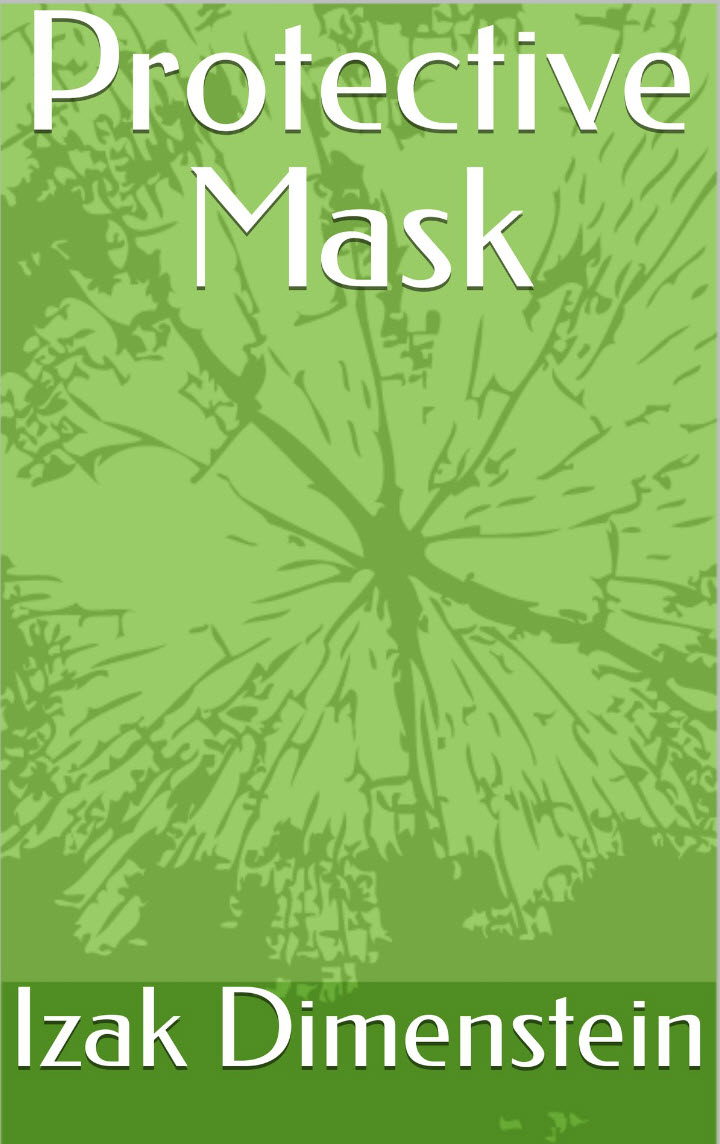Some remarks to the From Laboratory Niche Website to Authority Laboratory Website article
This article has been written specifically for Annals of Diagnostic Pathology as a continuation of already published material on this subject (Dimenstein IB, Dimenstein SI: Development of a Laboratory Niche Website. Annals of Diagnostic Pathology, 17 (2013) 448-456. http://dx.doi.org/10.1016/j.anndiagpath.2013.05.002. The journal could not publish this article, deeming it out-of-scope for its readership. Eventually this article has been partially published in Dimenstein IB: Laboratory Educational Authority Website Development. International Journal of Education and Information Technology Volume 2, Issue 2, April 2016, pages 8-13 and Dimenstein IB: Technical Note: Experience of maintaining laboratory educational website’s sustainability. J Pathol Inform 2016, 7:37 (1 September 2016)DOI:10.4103/2153-3539.189702 www.jpathinformatics.org/article.asp?issn=2153-3539;year=2016.
However, I would like to share with the potential developers of their own laboratory educational websites my observations and experience in maintaining more than a decade an educational, noncommercial website.
If the website had for one year around 100,000 views, keeping in mind the limited amount of professionals interested in the narrow website’s subject, it means that visitors return to it on multiple occasions. Perhaps, this is some evidence of a laboratory educational website’s sustainability.
WordPress provides daily statistics of views (free!), as well as very useful data about what topics were opened and topics the visitors were interested in.The latter is very useful, but there is a physical/temporal/topic/experience/knowledge limitation to satisfy the interests of all visitors.
Unfortunately, the program does not always allow illustrating from the computer screen with high quality examples. We did our best. It looks that the illustrations are satisfactory legible. Without them the article is meaningless. Perhaps this technical problem will be fixed later. Every article on the website is and should be work in progress. This is one of the main advantages of a website, but the concern for the website’s host of being in permanent time and efforts consuming state of changes.
Again, this article is intended for a scholarly journal. The composition violates the rules of presenting the material on the website (too long, without fragmentation, scarcity of illustrations), which the article is propagating. Some other articles on the website also have this deficiency, but sometimes it is useful to have a comprehensive approach, although we, as consumers demanding TV images, are in contempt with such presentation.
Abstract
Laboratory methodology websites are specialized niche websites. The visibility of a niche website transforms it into an authority website on a particular “niche of knowledge.” The article presents some ways by which a laboratory methodology website can be maintained as a reputed source of specific online information.
For the Internet sustainability of a laboratory niche website, the search engine’s work should be taken into account in the background design of a website in general and web pages in particular. Apart from informative content, which is paramount, formulation of key phrases and the strategic use of keywords on pages can enhance the visibility of the site. The experience of marketing niche websites can be applied, but after it is adjusted to suit the relatively rigid laboratory methodology and standardization requirements. Hyperlinks open a chain reaction of additional links and draw attention to previous posts. This article includes experimenting with “influencing” search engine query result page, as well as personal observations and recommendations on laboratory niche website sustainability. Publications in printed edition and periodic update of the site’s pages are substantial part of the website’s visibility on the Internet.
Although the article explores a laboratory niche website on the basis of our hands-on expertise of maintaining the” Grossing Technology in Surgical Pathology” (www.grossing-technology.com) website, the methodology for developing a specialized authority website presented here can be applied to other professional niche websites. This article is a continuation of previously published article “Development of a Laboratory Niche Website” in Annals of Diagnostic Pathology http://dx.doi.org/10.1016/j.anndiagpath.2013.05.002
Introduction
The definition of a niche website originated from Internet marketing when a small portion of a much larger market is targeted. Now, every website that is designed to present a specialized topic can be termed a niche website. Niche websites encompass a wide variety of incomparable subject such as selling embroiled napkins or grassroots political statements.
Laboratory niche website reflects the precise goals of a methodology website where procedural details are predominant. However, In contrast to niche marketing websites, which exhibit the tendency of narrowing the scope of products to maximize earnings by avoiding competition with the mainstream market, the laboratory niche website addresses a narrow area of technological interest in the context of a broad general methodology approach.
Specialized laboratory niche websites can be likened to a platoon in the military, but unlike platoons, niche websites can be stand-alone entities on the World Wide Web. However, if a niche website stays alone, it translates to failure because the goal of such websites is to reach out to target audiences. The challenge lies in how to create a voice for a site that is audible in the overcrowded with millions of websites Internet wilderness with its millions of websites.
Numerous books 1-5 and online materials provide recommendations on how a website can secure a place on the Internet. However, these materials have predominantly commercial orientation or discuss general website design issues with minimal presentation of professional, especially methodology niche websites.
This technical note explores the methods of maintaining a laboratory niche website’s sustainability on the Internet. Our goal is considerably modest: we want to presents some personal experience that is definitely limited but supported by the Internet longevity and visibility of our “Grossing Technology in Surgical Pathology” (GTSP) website which is used as an example. The site developed an evolution from a static to a dynamic website by using WordPress platform. There are particularities in the design of a laboratory website. The principles of the development a laboratory niche website are discussed in the article “Development of a Laboratory Niche Website.” 6 This technical note is a logic continuation of the article. There has been no similar work in the accessible literature.
Methods of developing an authority laboratory website
A laboratory methods niche website is made ‘alive’ through a slate of visitors with relatively narrow specific interests. It must be findable by search engines. Visibility is the key. Ideally, if the topic were placed in the search engine query box (bar), the niche website should appear on the first line of the first result page or at least on the first three pages. If not, it does not exist for the “Internet market”. At the risk of sounding boastful, we can say that GTSP has almost always been on the first page of search results on ‘grossing technology’ or ‘grossing techniques’ topics with an average traffic rank more than 100K.
The definition of an authority website reflects the visibility of a niche website. On this subject, a website development blogger posted: “In layman’s terms, it is a popular site that people frequent, that gets linked to on the basis of its merit, or that others willingly refer to when the topic of that site comes into play.”7 The dispute between niche website vs. authority website is analogous to whether it is better to be rich and healthy or poor and ill. The problem is how to transform a niche website into an authority website.
A niche laboratory website can follow the methods for marketing niche websites in order to gain visibility on the Web and to attract the desirable attention of laboratory practitioners. Unfortunately, many formal methods of building a marketing authority website cannot be applied to a laboratory niche website due to the relatively rigid laboratory methodology and the standardization requirements.
Authority websites have a ranking promotion from major search engines, which stack them up on the basis of ranked query results through their algorithms. One of the methods of search engines optimization (SEO) is through strategic, though tactful, or “ethical”, placement of key words at the beginning, body, and end of articles and posts. Other methods include the use of tags, trust rank, backlink profiles, and links to well-established, preferably indexed publications.
Due to the discrete characteristics of laboratory procedures, a reasonable fragmentation of the material, such as differentiation or reorganization of online content, would be a specific method in the laboratory niche website design (the “nested doll principle).6 It can provide additional leverage of key words placement for search engines.
The pages and posts of niche websites ostensibly differ from papers in peer-reviewed journals. While constructing the initial fragmented files, it must be noted that apart from the hopefully numerous visitors (peer review experts in the field) to the website, a robot will scan through the text. In the fragmented articles/pages and posts, hyperlinks enhance the “link juice” (PageRank) of the niche website material. This opens a chain reaction of additional links, drags attention to previous articles that inevitably age and wane from attention. Thus, the laboratory niche website can maintain its authority through the life cycle of its archives. Without informative content, however, which generates visitor’s interest, all the efforts of search engine optimization are useless. A golden cage cannot make the canary sing.
Although Web crawlers(e.g. spiders, crawlers, web walkers, robots, webbots, and simply bots in computer science lingo) are a central part of search engines (in common perceptions synonymous with them), details on their algorithms and architecture are kept as business secrets or discussed in high-level computer science literature 8, although Google placed online very useful Webmaster Guidelines to help search engine to find, index, and rank a site.9The major search engine companies (Google, Yahoo, Bing- Big Three) and others use their own spiders for identification of the wide range online content. In a broader approach, web pages should be designed with the aim of maximizing the extraction of relevant information by a specialized Web crawler, e.g., academia-focused crawlers, which work according to specific algorithms.
Diagram 1 presents the work pattern of a search engine on the background of the modified “A simple spider” diagram in the Michael Schenk’s book (p.174).8 The diagram is accompanied with GTSP website illustrations. The diagram displays the Web crawlers work as a perpetual process when the maximum penetration is only a transitional step to the next maximum penetration. This understanding opens opportunities for tactical considerations in the placement of material on the site (see Recycling and Updating below.)
Actually, this is only a part of how search engines work as they incorporate harvested information into databases through indexing. Then they analyze such information through complex algorithms on link ranks and relevance to the search keywords. The diagram illustrates the multistep process of a Web spider’s work to highlight the issue that although designing different parts of a laboratory website (home page and its components) necessitates individual approaches, these elements are permanently interconnected. The ultimate goal is for the website to land on query results pages.
Ideally, a clear understanding of how Web crawler screen pages should exist. How do spiders harvesting links? When do they reach the maximum penetration level after download links from URL’s and web pages? How often do Web crawlers return to previously screened material? How do changes in the page/post influence the search engine ranking of a website? These questions are very important because they give answers to practical actions: when keywords should be placed and what is the most effective way of making hyperlinks work. Anyway as a practical recommendation, when a new page/post is placed on the website, all provisions for search engines (structure of the file, key phrases, and key words) should be ready and included simultaneously with its first appearance on the web, just in case. The URL (domain address) should be discrete and easily recognizable by a spider at the first penetration level. This is the first page that the spider downloads. Additional pages are then downloaded until the spider reaches the maximum penetration level (see diagram 1).
Many components of search engines work are obscure and beyond the realm of the host of a laboratory niche website. We should, at the least, use recommendations that we understand. The question of how to leverage the website authority is described in more detail in many online materials (see, for example, an excellent post on this subject.)7
Examples of search engine optimization (SEO) for a laboratory niche website
This article includes experimentation on “influencing”, or “manipulating”, search engine query result page to enhance website visibility. Perhaps, this experience and personal observations may be beneficial for website’s hosts and website’s users for better understanding how a laboratory website can be maintained on the Web without proficiency in the computer science. More sophisticated methods are the realm of website design professionals.
Key words and sentences
It is useful to periodically review your website’s short descriptions ( “annotations”) on the query results page of Google or other search engines, which somehow characterize or highlight the topic (query keywords). Indeed, these couple sentences have been obtained from the page/post text. They can sometimes be out of context and are often irrelevant to the main subject (text obtained by a crawler) but it is important to see what is extracted from the page’s text by the Web crawler.
Let’s take a simple example. If Google were searched for “orientation sampling surgical pathology,” relevant results from our GTSP entities would be provided on the first lines on the first page (Figure 1.)
Figure 1. Google’s query result page on ‘orientation sampling surgical pathology’ topic.
The rest of the search results would follow. However, it missed the logical procedural page “‘Embedding Follow-up,” which was also on the website (Figure 2). This was a deficiency in the visibility of the website as a methodological entity.
Figure 2. Google’s query results list on the topic ‘Embedding Follow-up in Surgical Pathology’
After a vague initial sentence “The following-up of embedded sampled specimens is becoming less common…” (Figure 2, in yellow circle) was replaced with “Embedding follow up is part of sampling orientation in the processing cassette” (Figure 3 in yellow circle) the page “Embedding follow-up in Surgical Pathology Laboratory” appeared below the page “Orientation during Sampling in Surgical Pathology” (Figure 4.) on the same (!) day . When these web pages are presented together on Google’s query result page, they represent the laboratory website methodology fragmentation principle: separate but together. Now both topics are always together on the search engine’s result list (Figure 5), if it is possible, however, for anything to remain always the same on the Internet,
This example, which was an experiment from our practice, shows how a formal page structuring exercise can allow the host to enhance informational or methodological value of the site. This may be a minor detail bur methodology is about details. This is also an illustration of how formulation of key sentences and words on a website’s page can influence (“manipulate”) the query results of a search engine.
Figure 3. The changed first sentence in the page
Figure 4. Google’s query result page on ‘orientation sampling surgical pathology’ topic after changes in wording of the first sentence.
Figure 5. Google’s query result page on ‘embedding follow up surgical pathology’ topic after changes in wording of the first sentence.
Keyword placement is a considerably delicate task. Both extremes should be avoided: one must not neglect tactical use of key words or provide an excessively long list of them. There is a notion that the keywords list has outlived its usefulness.1 The main advantage of key words tool, however, is its relevance to topics and texts. Presented illustrations demonstrate it. In a laboratory methodological website, simply crafted sentences that include related keywords are sufficient to stabilize identification by a search engines. The simplicity of the website’s language is not a disadvantage in this situation, but enables single-minded robotic Web crawlers. Numerous editing agencies such as Scribendi should identify materials intended to be published as a niche professional website keeping in mind the Web crawlers as one of the potential “readers” of the material. The style of these materials should be different from that of articles to be published in journals or magazines.
Publications
Publications in preferably peer-reviewed periodicals are a significant part of transforming a laboratory niche website into an authority laboratory website. Peer-reviewed publications, indexed by some online entities, such as PubMed and ScienceDirect, provide links to the website and other related publications. Printed publications are by definition less fragile and more or less permanent, as opposed to websites, which are a dynamic but fluent part of the information media. Here are some examples from “Grossing Technology in Surgical Pathology” website experience.
For example, on the query topic “biopsy grossing techniques,” the first three results on the first page of Google’s search engine are followed by two results of an article published in Annals Diagnostic Pathology in 200810 (Figure 6.)
Figure 6. An example of Google’s query results page on ‘biopsy grossing techniques’ topic.
Another example would be if the “bone grossing surgical pathology” topic were placed in Google’s query box. Perhaps if our website occupies more than one page for the query topic “bones grossing surgical pathology” on Google, a peer-reviewed publication in Annals of Diagnostic Pathology might contribute to the search engines’ “appreciation.”11 A publication in CAP TODAY’s Innovation in Pathology could also be beneficial.12 Some comprehensiveness of the “bones grossing surgical pathology” topic on the website, when even the CPT coding (see the line circled in blue on the Figure 7) and safety (see arrow on Figure 8.) are presented, might also be useful for search engines’ results pages “generosity,” because these materials were also published.13, 14
Figure 7. Page 1 of Google’s query result page for ‘bone grossing surgical pathology ‘topic.
Figure 8. Continuation of Page 1 of Google’s result page on the ‘bones grossing surgical pathology’ topic.
Figure 9. Page 2 Google’s query results page on ‘bones grossing surgical pathology’ topic.
It looks that publications preferably should precede the placement of website’s materials (articles/pages, posts and others.) The latter are increasingly disregarded by Web crawlers; unfortunately, website materials are fading fast. The synchronization is important. It is understandable that publications are not manageable by the host, but posts are. Publications often generate some leftovers which for many reasons do not correspond with the printed material. They can be placed as posts on the website with appropriate links.
Internal links
Links are the lifeline of website sustainability. Real estate’s “location, location, location“ corresponds to website visibility advanced by “links, links, links.” Internet spiders download and harvest links from web pages referenced by links harvested during perpetual crawling on the Web (see the diagram 1).
Google (represent around 70 percent of search traffic) determines the value of a website through links to it from other websites. The search engine ranks the website by using its PageRank algorithm. The higher the number of links to the website, the more accurate the ranking, although an excessive number of links is discouraged because this will dilute PageRank. However, a laboratory methodological website cannot have too many links given that relevance to the website’s topic is a stringent criterion. Internal links can be used for better query results page outcome.
An example from our website can be an illustration. Despite our website’s diverse presentation of bone grossing topic on result pages , search engines, however, had ignored for some reasons three article: “Bones which do not fit the cassette”, “Fragile bones on the grossing table”, “The third hand immobilization principle in bone gross section .” These pages are on important topics which touch the most difficult part of bone grossing. Perhaps, they are solely contributions to the bone sampling methodology by this website. We have to admit that all formal attempts to draw search engines’ attention to these “jewels” of our website by reshuffling key words and sentences failed. More, they were presented on the website’s slide show in full, but it seems that spiders do not have modern people TV mind set.
These articles appeared on the Google’s search engines query results page on the ‘grossing small bones’ topic only when more internal links were added (Figure 10).
Figure 10. Google’s query result list for ‘grossing small bones’ topic.
As a general observation, it is reasonable to place some fragmented pages on the website simultaneously with each other, in clusters that would provide internal links to enhance the website’s visibility. In particular, this provision should be followed when the website is launched or in the early stages of its existence.
Maximization of internal links is completely reasonable and justified for increasing the visibility of the site while comprehensively presenting of the topic. It is not a link scheme that Google warns to avoid in the Webmaster Guide, when some marketing niche websites practice to enhance their PageRank through link exchange.9
By the way at the same time, when the Bing search engine was queried with the same words, ‘grossing small bones’, it was “generous” only for one “Fragile bones on the grossing table” (Figure 11). However, when the topic in the query box was changed to “small bones grossing,” Bing was able to recognize at least two entries (Figure 12.).
Figure 12. Bing’s search engine result page on ‘small bones grossing’ topic
As it is well known, sometimes even a change in the sequence of the same words in the query box elicits different results. Web spiders are not the smartest creatures in the room, but they cannot be outsmarted either. We can only try.
Recycling and updating
Recycling is the favorite concept for environmentalists, and is acceptable in fashion. In the intellectual sphere, however, the same term is considered negative, especially in the arts. Recycling is, however, a necessity to maintain visibility on a laboratory methodological website that is considered to be an authority website. Website’s pages and posts should be dynamic, but changes may be too minimal to be visible to Web crawlers. Sometimes, these changes are only adjustments in approach, which cannot be recognized by crawlers. The sad truth is that pages fade from visibility with age. The best methods to refresh these pages would be by connecting through links on a particular topic. However, these links need not necessarily be available or even exist.
One option is to recycle the page by using a new title or a different set of words. Web crawlers will forgive, as well as the old friends of the site, but it is a way to bring in acquaintances who may become friends of the site in the future. Are we satisfied with our articles, pages, and posts? Of course not. Recycling is an opportunity to revisit these pages and make changes to the posts. Updating can be incremental, but is significant both in terms of making the site more relevant to current trends in methodology and contributing to visibility on the Internet. This is the advantage of a website. Why not use this opportunity? By the way, changing only the title “Bones which do not Fit the Processing Cassette” to “Grossing Small Bones” was appreciated by web crawlers, although the first title was more informative and concrete. Sometimes and too often our mind set and the logic of procedure differ from the web spider’s algorithm.
Composition of a laboratory niche website
The composition of the laboratory niche website itself is also important to make it an authority website. Three optimal components of a laboratory methodological website, namely, the basic component, the blog, and the ancillary component, can contribute to the sustainability of the website.
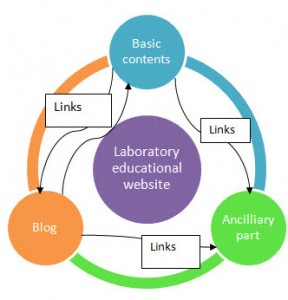 Diagram 2. Interaction among the components of a laboratory niche website. See the article Laboratory Educational Website’s Components for details.
Diagram 2. Interaction among the components of a laboratory niche website. See the article Laboratory Educational Website’s Components for details.
These three components can overlap like in a Venn diagram, and they share a dynamic relationship. The interaction of the internal links of the basic component’s pages and the blog posts are a definite advantage for the laboratory niche website (Diagram 2.) When the blog links to your Web site’s basic component, and vice versa, traffic flows to both, and visibility increases. The internal links provide methodological comprehension of information without interfering with the logical presentation of the material. On the other hand, they add to the visibility of the site by repetition of key words.
The internal links in the basic component’s pages are the most obvious and easily accessible, while the interaction of links between the basic component and the blog are the most valuable. Both the basic component and the blog can provide relevant links to ancillary component.
The blog allows the website to react to current events and discussions as well as respond immediately to comments posted on the website. Visitors with real expertise in the field can be part of the website as peer-reviewers. This exchange can transform the laboratory niche website into a panel discussion on a particular topic or even on general issues. As previously stated, the repeat visits are always a reward for a website. Every website wants to have a reference group. This is not,however,what in the popular website design lingo is called a sticky site.
The ancillary component of the website can include several categories, including links to different websites, publications, and manufacturer’s advertisements. All the three components enhance visibility, increasing its authority.
Discussion
A website is not created for eternity although everything that is published on the Web remains there; a cached copy can be obtained from Google. A website is a dynamic, actually transitional, intellectual entity that exists on the Internet at the mercy of powers that are beyond the site host’s ability to completely influence. Without visibility to the targeted audience, a website is an exercise in futility. A methodology niche website intends to be an authority website, a popular site in a specific area, e.g., the “niche of knowledge.”
A marketing niche website and laboratory niche website emerge on the Internet from different standpoints. Due to fierce competition, the former aims to stand out from the crowd of similar websites as being unique, literally a niche that can give an edge. In contrast, the laboratory niche website, as a specialized entity, is empowered when it is part of a group of similar websites that confirm its relevance in the field. The laboratory methodological website’s lifespan is different also from marketing niche website. The latter need permanent changes, “refreshing”, but a laboratory website requires updates. Both, however, converge on the way to being authority websites by following the rules of Internet existence: the requirement of informative content, relevant keywords optimization, and link interconnections. Ignoring these rules would cause both types of websites to fade into oblivion. A marketing niche website resembles a flower: short bright blooming followed by inevitable fading. In contrast, a laboratory niche website grows stronger with age like a tree, especially when it is part of a portal, like a manmade forest. Although for most marketing niche websites, link building with other websites in the same field is part of achieving a better page rank (as it was already mentioned, Google disapproves, actually warns off, the practice “Link to me and I’ll link to you” as a link scheme)9, links between portals are evidence of the stability and importance of a laboratory niche website. The development of a laboratory methodology portal/s requires a special discussion.
Publications of laboratory niche materials fully or in part in printed editions are substantial parts of the website’s visibility on the Internet and contribute toward transforming it into an authority laboratory website. Despite their shortcomings, peer-reviewed publications are useful for of external link. These backlinks are the most valuable for laboratory website sustainability, although they are apparently less manageable than internal links.
Workshops, seminars, lectures, and poster presentations related to the topic can be used to promote the website. Printed abstracts should include the website’s URL as an additional source of backlinks. These types of publications are very short lived on search engines’ result pages, but everything is transitional on the Web. This is also a way of testing the website’s materials. The website’s visibility can be promoted by transforming word of mouth into mouse clicks.
Participation in a professional discussion group (e.g., HistoNet) can be a type of partially induced external link; when a question relevant to a website’s subject is answered, a reference link to the website is placed. This approach promotes the website with the creation of a website reference group. A laboratory website, however, does not “suffer” from the ‘traffic virus’ that proliferates on popular social or marketing sites, because the potential audience is for understandable reasons limited.
The structure of the website’s basic component (the categories template) can have some influence on Web crawlers’ attention. It has been shown that search engines “prefer” sites that are structured wide rather than deep.15 However, the design of laboratory methodological website tends to exhibit hierarchy fragmentation (the “nested doll” principle) of material that requires a deep structure of the basic component’s pages. 6
The website’s content and structure should also take into consideration modern, multi-device Web development, as information can now be accessed not only from desktop and laptop computers, but also from smart phones and tablets. These web-enabled devices open more opportunities for individual use of methodology websites; this can translate into changes in laboratory methodology websites’ content to include more quick reference material. The popularity of the StainsFile website reflects the need for systematic reference sources. This website is designed completely differently than GTSP, giving evidence that diversity is beneficial for the distribution online information.
When creating a page, one should visualize the multiple legs of robotic spiders on the body of text to be included on the site. In contrast to an article in peer-reviewed journal, there is less of pressure by skeptical editor/ reviewer eye, but more display, or visibility, concerns. We have to realize as a fact of our Internet life, that a Web crawler is unappreciative of attempts to embellishing the page/post but is appreciative of redundancies, and partial to formal language. Sometimes the Web crawlers are stubbornly rigid, and all attempts to grab their attention are in vain. But, changing the well known proverb: If the mountain won’t come to us then we must go to the mountain, a professional niche websites should always try to maximize their exposure to search engines by making efforts to be crawler-friendly. Our article structuring experiments showed that a search engine’s result page can be influenced. It is not about how to trick the system but how to work with the Web by understanding its rules.
Of course, different search engines provide different queries. Even the Google search in Apple’s Safari differs from the Google search in Internet Explorer. Each search engine exhibits different behavior and crawl persistence.1 By the way, all attempts to “deceive” search engine systems (e.g., inputting a fake number of keywords on hidden text, providing “ghost” pages irrelevant to a website) are not worth the effort. As Google’s Webmaster Guidelines advise: “Make pages primarily for users, not for search engines.”9
While the basic component of the website is the main informational body, other components, especially the blog and the ancillary component are intrinsic parts of a viable laboratory methodology website. The presence of advertisements, sometimes irrelevant to the website’s subject, might seem like commercialization in the eyes of science purists. However, the first, compulsory advertisements are the “charge” that search engines (Google and others) impose on the site for providing the website with Internet visibility, and thus sustainability. The second, most important, despite the possibility of bias and conflict of interest, manufacturers’ advertisements, especially when they are in accordance with the website’s topics, can combine theory, methodology, and everyday practice. Actually, most laboratory methodology websites are a “labor of love.” They are open access sources of information in the direct meaning of these words.
Advertisement interaction is the return to the initial idea of a niche website. Visitors are attracted by the content of a specialized topic. Inadvertently, visitors pay attention to the advertisements (this is the principle of Internet ads). If they click on them or buy their products, the commission generated, albeit often symbolic, is governed by standing agreements. There is nothing wrong with this. The maintenance of a niche website requires time, effort, and money. Maintaining an authority methodological laboratory website with a good level of activity is therefore like a part-time job. Actually, most laboratory methodology websites are, as I’m repeating, a “labor of love.” They are open access source of information in the direct meaning of these words.
Finally, the methodological laboratory website’s materials are too precious to leave their presentation only to amateur self design. Periodic consultation, if not permanent care by a website structuring professional is desirable if not mandatory. Professionals have a strategy of timely placement of key words or fresh links due to experience collected in marketing niche websites. They can develop a search engine friendly sitemap that invisible for visitors but accepted by the major Web crawler’s protocols (Google, Bing, Yahoo, and Ask). The most important point is that building an informative authority website depends on a solid content structure with semantic richness that helps search engines to crawl and comprehend the page data more easily.16 The tactic of launching new materials (pages, posts, photos, etc.) also requires some professional experience. However, the website’s host must have control over the website components, especially web page structure.
These materials present predominately our personal experience in maintaining GTSP website for more than a decade. The site developed an evolution from a static to a dynamic website by using WordPress platform, a desirable though always not completely attainable goal. Many deficiencies are apparent, but it is more difficult to fix them than to do right from the beginning. One of the goals of this technical note is to help the readers to avoid our mistakes in building a visible and sustainable website by leaving space to make mistakes by themselves.
Conclusion
While the informative content of the laboratory niche website is the priority, the principles of the World Wide Web should be followed to maintain the site as an authority website.A professional authority website is like a garden. You cannot plant it and go away. Both require nurturing, pruning, and watering by avoiding a flood of words. You have to make the website visible and sustainable. A methodological laboratory site has to secure its place under the Internet’s sun.
References
1. MacDonald Matthew: Creating a Website the Missing Manual. 3rd Edition, O’Reilly Media, Inc., 2011
2. Bell Mark: Build a Website for Free. Third Edition, Person Education Inc., 2013
3. Thurow Shari: Search Engine Visibility. 2nd Edition, New Riders, 2008
4. McNeil Patrick: The Designer’s Web Handbook (What You Need to Know to Create for the Web) How Books, Cincinnati, Ohio, 2012
5. Parker Scott: The Web Designer’s 101 Most Important Decisions: Professional Secrets for A Winning Website. F+W Media 2012
6. Dimenstein IB, Dimenstein SI: Development of a Laboratory Niche Web site. Ann Diagn Pathol (2013) http://dx.doi.org/10.1016/j.anndiagpath.2013.05.002
7. “Authority Site Building” and Leveraging Website Authority. http://www.seodesignsolutions.com/blog/how-to-reference-material/authority-site-building-and-leveraging-website-authority/ (accessed July 26, 2013).
8. Schrenk Michael: Webbots, Spiders, and Screen Scrapers. A Guide to developing Internet Agents with PHP/CURL. 2ed; No Starch Press San Francisco. 2012; p.174.
9. Google. Webmaster Guidelines. <http://www.google.com/support/webmasters/bin/answer.py?answer=35769>. (accessed July 26, 2013)
10. Dimenstein IB:Bone grossing techniques: helpful hints and procedures. Annals of Diagnostic Pathology 2008; 12:191-198
11. Dimenstein IB: Grossing biopsies: an introduction to general principles and techniques. Annals of Diagnostic Pathology2009; 13: 106-113
12. CAP TODAY – In Seth L. Haber’s column “Innovation in Pathology”: Handling bones and other calcified tissue –September 2003; December 2003; March 2004
13. Dimenstein IB: Principles and Controversies in CPT Coding in Surgical Pathology. LabMedicine 2011; 42: 242-249
14. Dimenstein IB: A Pragmatic Approach to Formalin Safety in Anatomical Pathology. LabMedicine 2009 Vol. 40 (12):740-746
15. Smith JA and Nelson ML: Site Design Impact on Robots. An Evaluation of Search Engine Crawler Behavior at Deep and Wide Websites. D-Lib Magazine Volume 14, Number ¾.2008.
16. Gaston P. The Modern Web. Multi-device web development with HTML5, CSS3, and Javascript. No Starch Press San Francisco. 2012; pp. 2-7.
17. StainsFile.Inf.http://stainsfile.info/StainsFile/jindex.html (accessed July 26, 2013)


